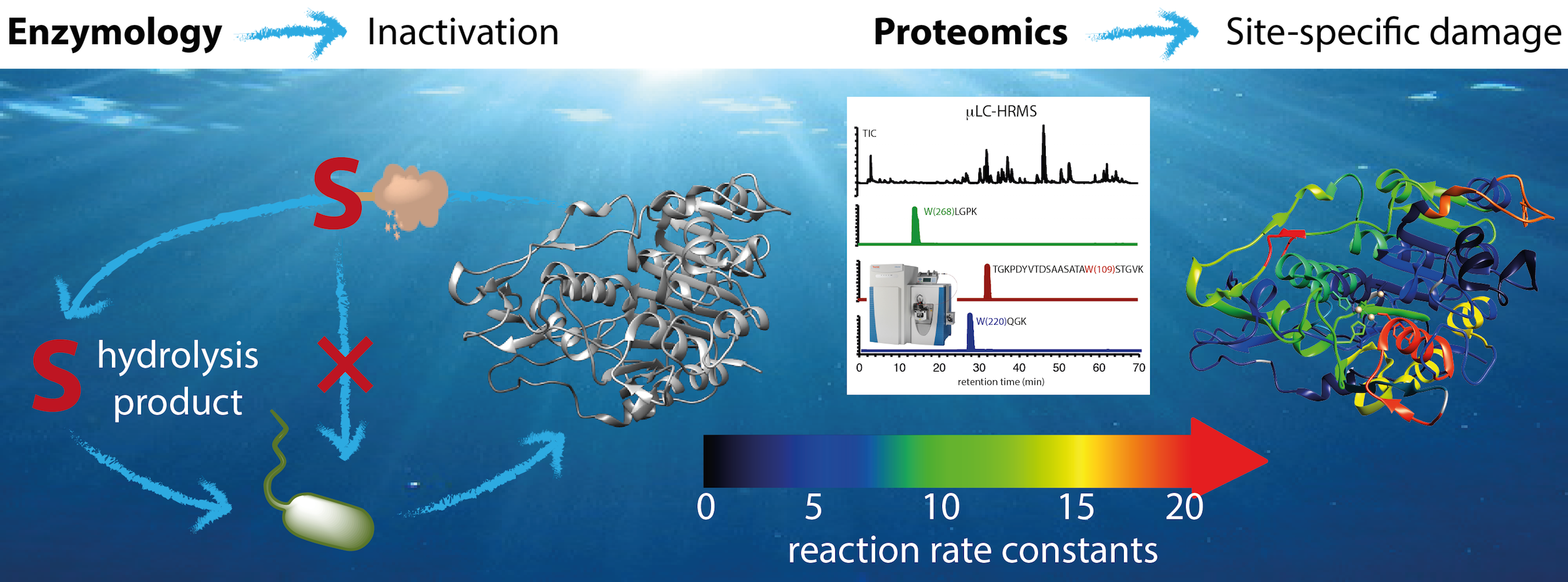Stabillity of extracellular enzymes in surface waters: Comprehensive structural and functional analysis by proteomics techniques and enzymology
Various bacteria and algae excrete extracellular enzymes that play central roles in the biogeochemical cycling of nutrients and carbon by breaking down macromolecular organic matter. Activities of extracellular enzymes are ubiquitous in surface waters and the ability of these enzymes to influence aquatic systems critically depends on their stability. Once released by the cells, extracellular enzymes are susceptible to various transformation processes that can lead to inactivation, including biodegradation, sorption, and light-induced reactions, which we focus on in the presented work.
By employing enzyme specific proteomics techniques and enzymology we study site-specific damage in the macromolecular structure of enzymes and inactivation rate constants. Our approach to study intermolecular processes within the higher order structure of enzymes can also be applied to various processes besides photochemistry.

To study the effects of photochemical reactions, we expose enzyme solutions to enhanced UV light in absence or presence of natural antioxidants. We monitor activity by enzymology and degradation in the enzyme structure by proteomics techniques during the exposure time. Refined proteomics protocols allow us to monitor peptide fragments with microLC-HRMS accounting for 80-100% sequence coverage of each protein. Hence, we can produce nearly complete pictures of the site-specific damage within the enzyme structure.
We demonstrate that tryptophan (Trp) oxidation within the protein structures tracks the inactivation kinetics during exposure to light. Furthermore, inactivation as well as Trp-peptide degradation are both slowed down in the presence of natural antioxidants. Here, photochemically produced radical cation intermediates of Trp react with antioxidants by electron transfer which forms parent Trp and decelerates photodegradation. These phenomena can be observed across the three model enzymes. In addition to oxidation of Trp containing enzyme fragments, secondary reactions can be observed. For example, oxidation of tyrosine-containing moieties via a (proton coupled) electron transfer or disulphide reduction in proximity to photoexcited tryptophan.